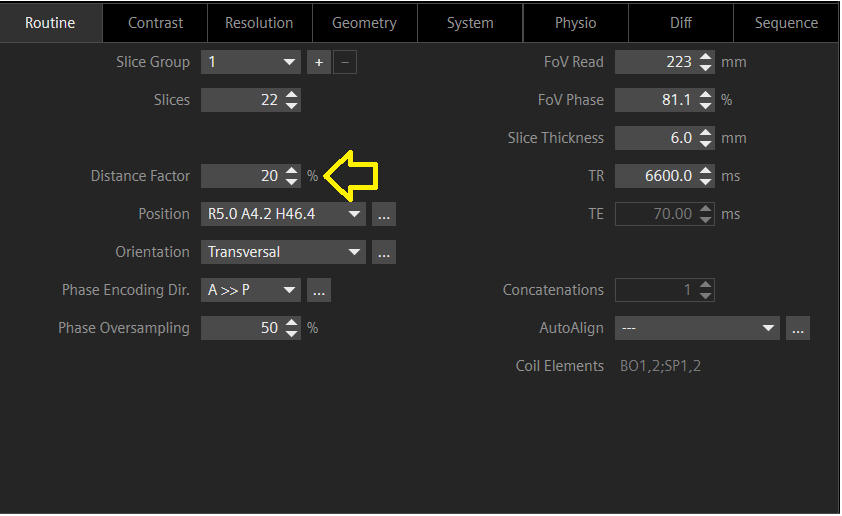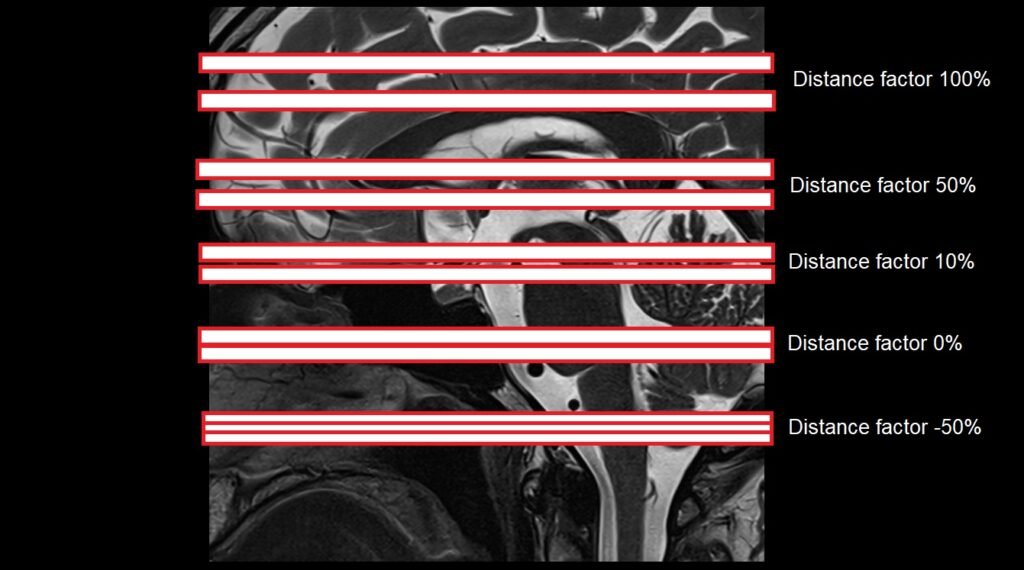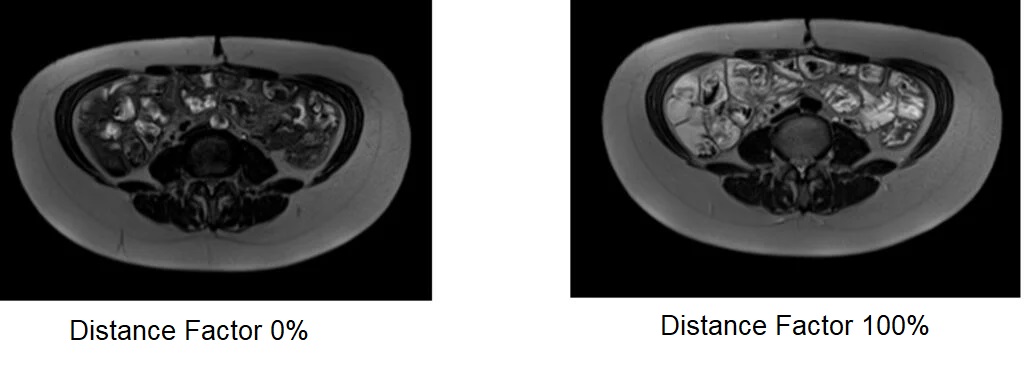MRI Distance factor or Slice gap
In Magnetic Resonance Imaging (MRI), the term ‘distance factor’ or ‘slice gap’ typically refers to a setting related to the spacing of slices within a multi-slice acquisition sequence. This factor determines the gap between consecutive slices in a scan and is particularly important for preventing cross-talk between slices and optimizing image quality. The distance factor is usually expressed as a percentage of the slice thickness.
Aortic flow is measured with a VENC of 50 cm/s

Definition of distance factor
The distance factor is a percentage that indicates how much space is left between the slices relative to the thickness of each slice. For example, a distance factor of 0% means that the slices are contiguous with no gap, whereas a 100% distance factor means that the gap between the slices is equal to the slice thickness.


Advantages of Distance Factor
- Improved Scan Efficiency: By increasing the distance factor, the scan time can be reduced as fewer slices are needed to cover the same volume, which is beneficial in high-throughput settings or when patient comfort is a priority.
- Reduced Cross-Talk: Setting an appropriate distance factor helps minimize RF interference between adjacent slices, thus enhancing image quality by reducing cross-talk artifacts.
- Versatile Imaging Options: Adjusting the distance factor allows for the customization of imaging based on specific diagnostic requirements, such as using overlapping slices for continuous coverage to ensure no tissue is missed or creating smoother reconstructions.

Disadvantages of Distance Factor
- Potential Gaps in Coverage: A high distance factor might lead to gaps between slices, potentially missing information especially in areas with intricate structures or pathology.


